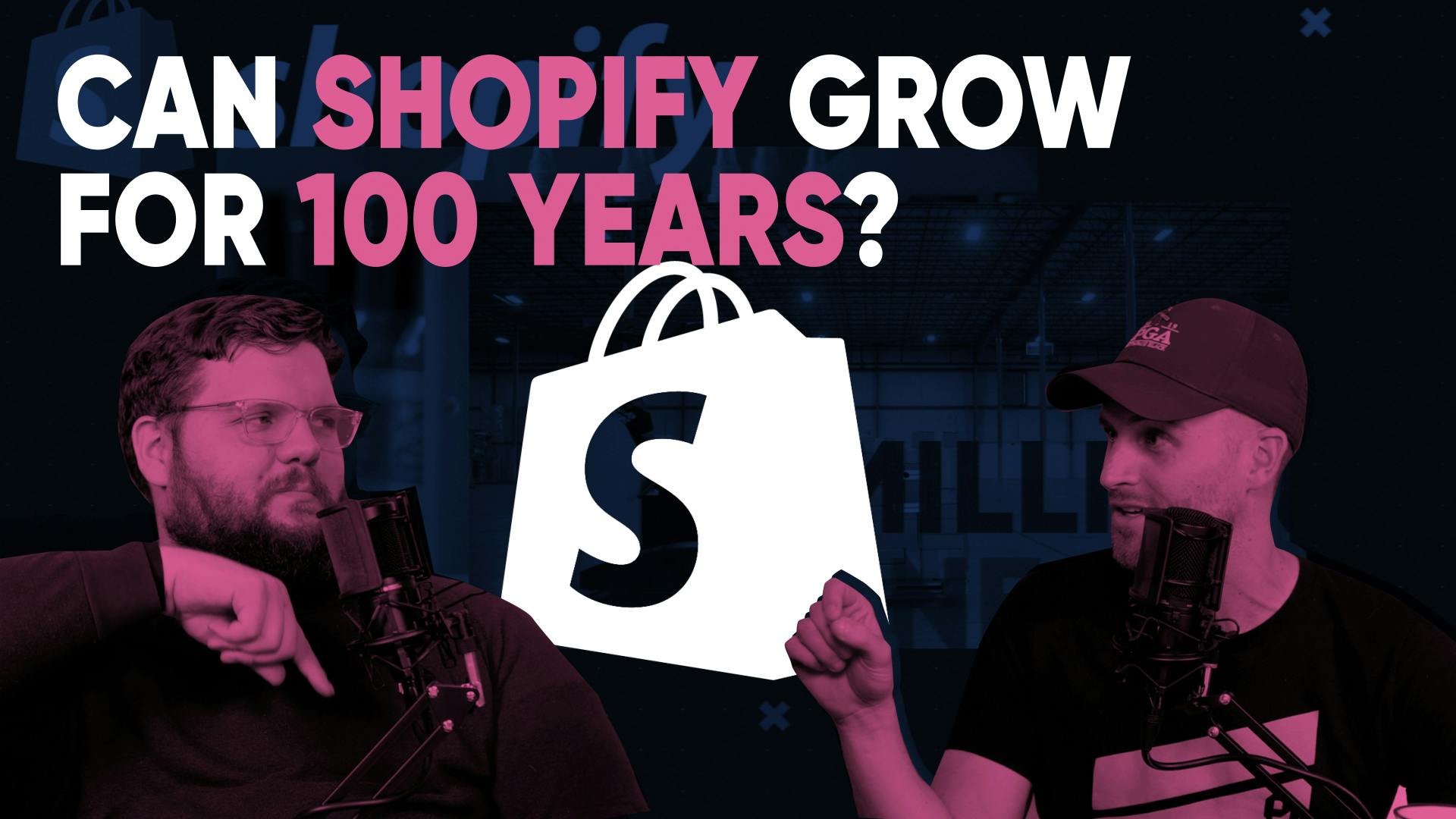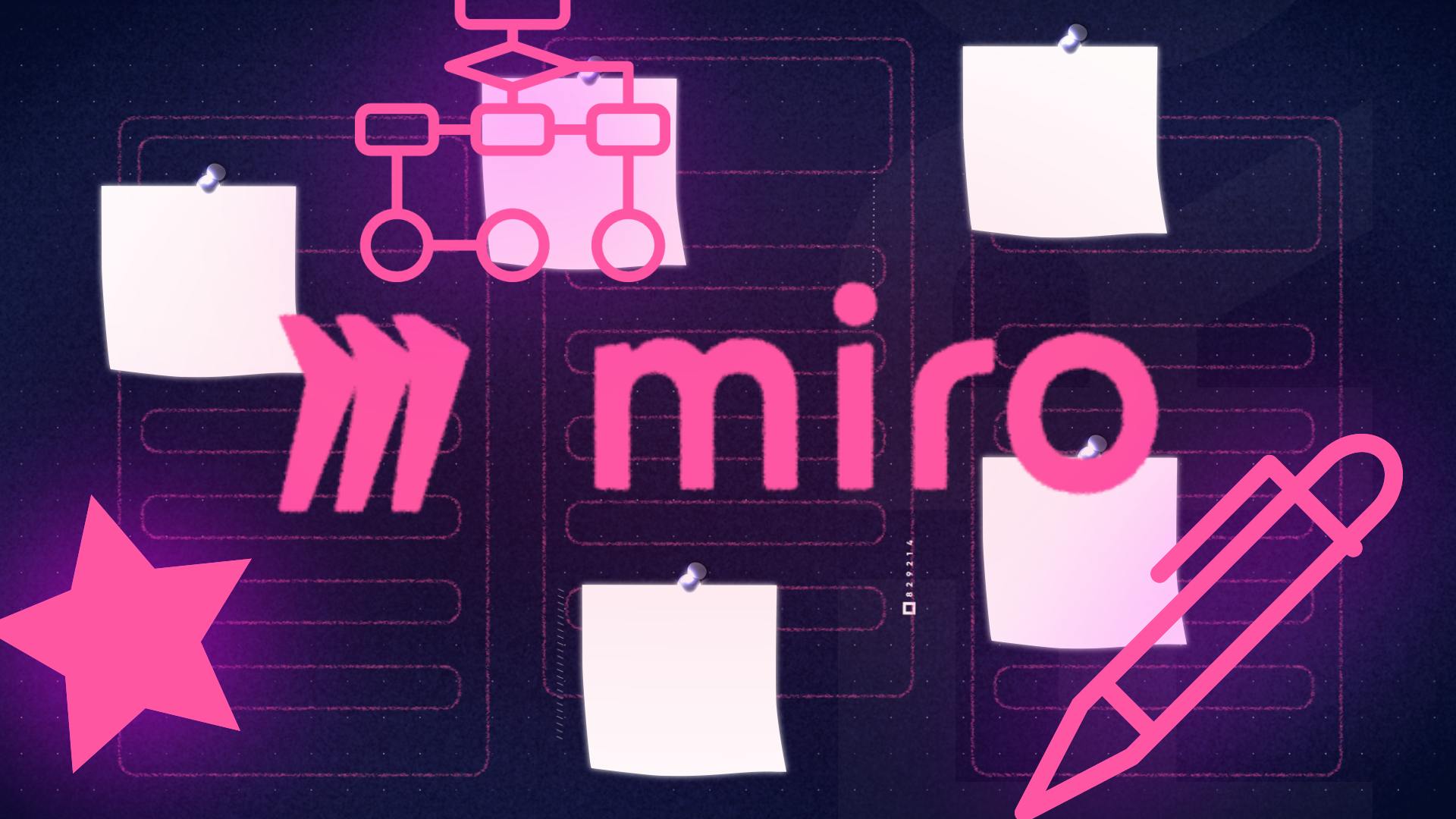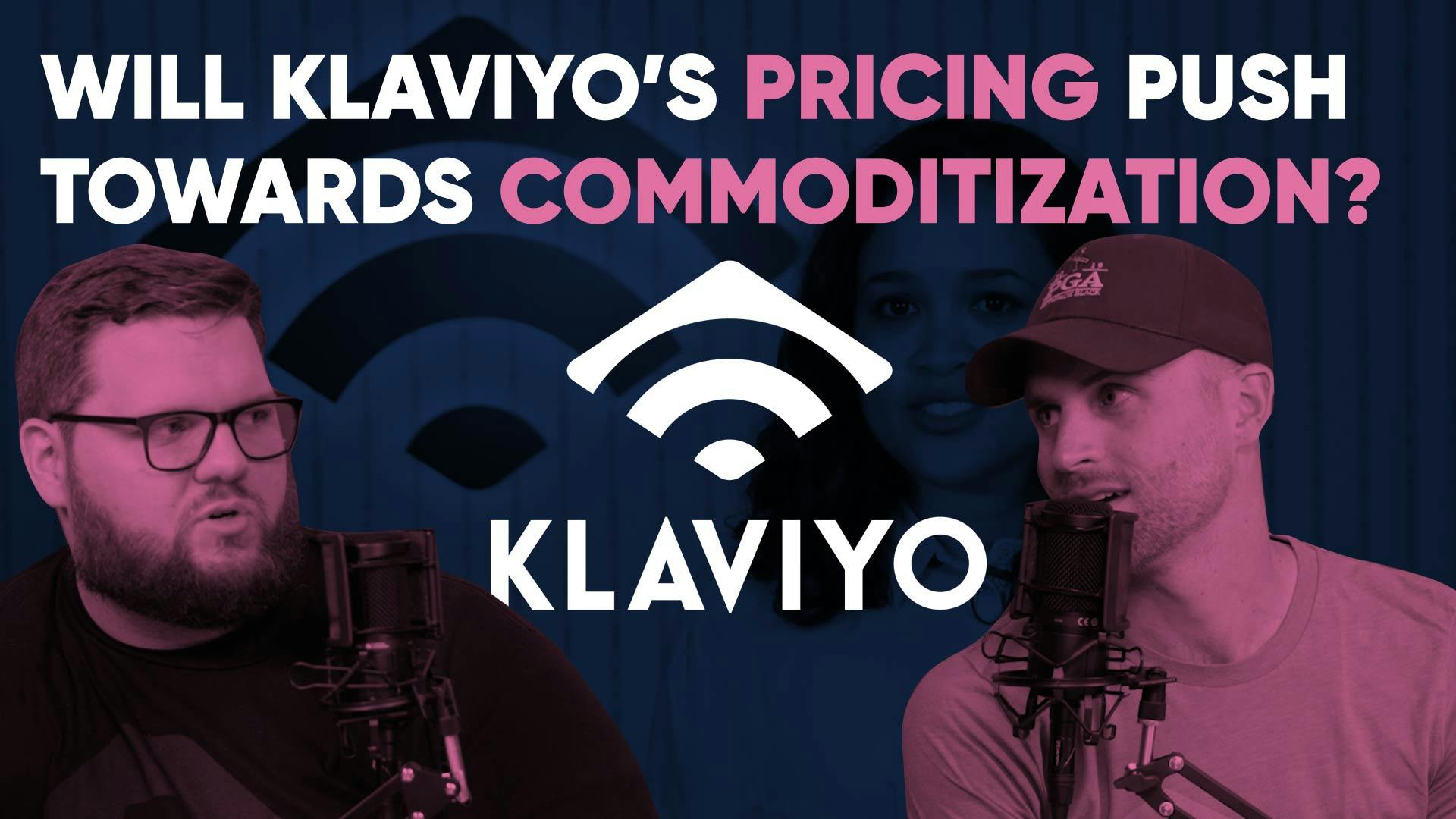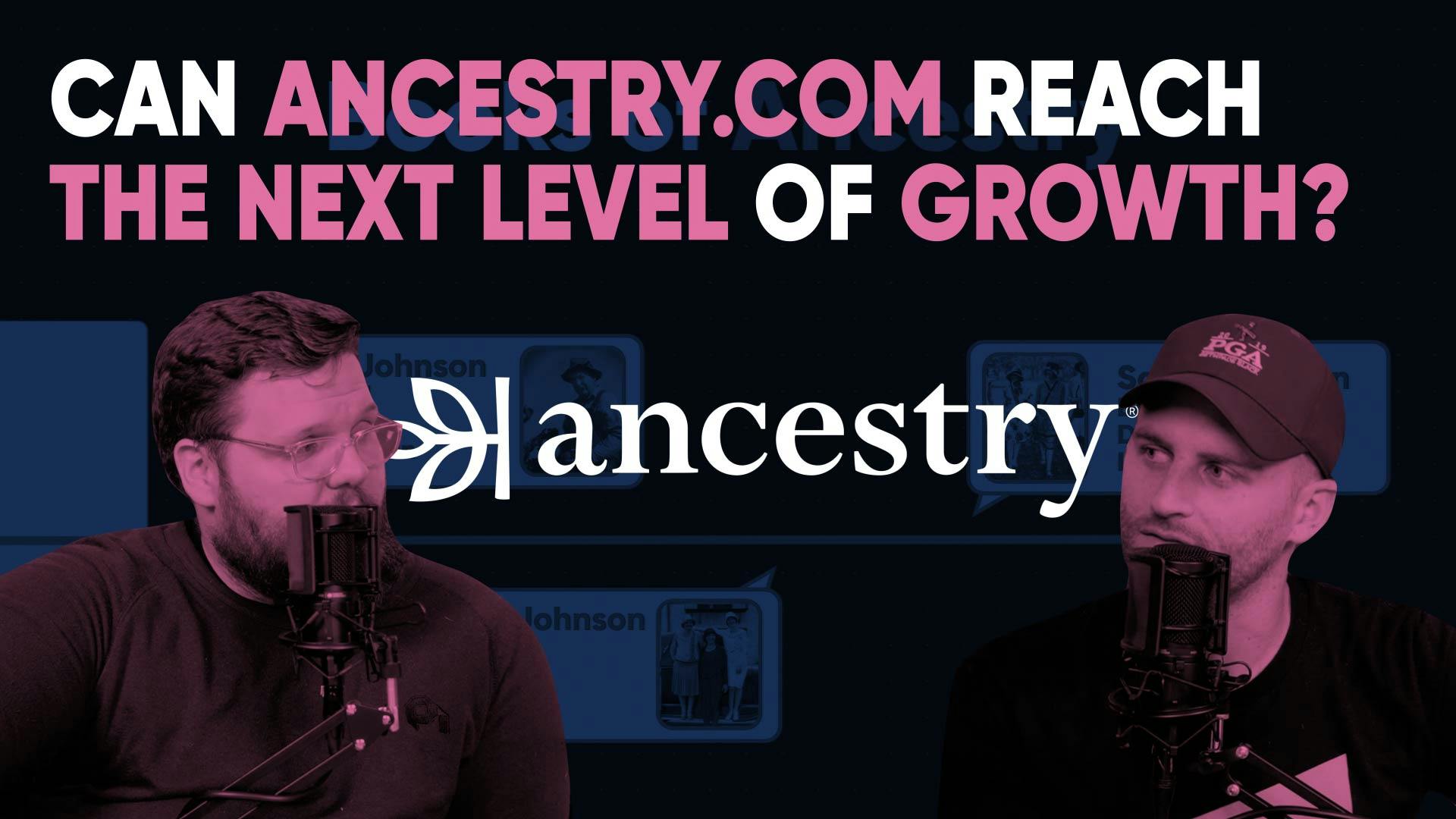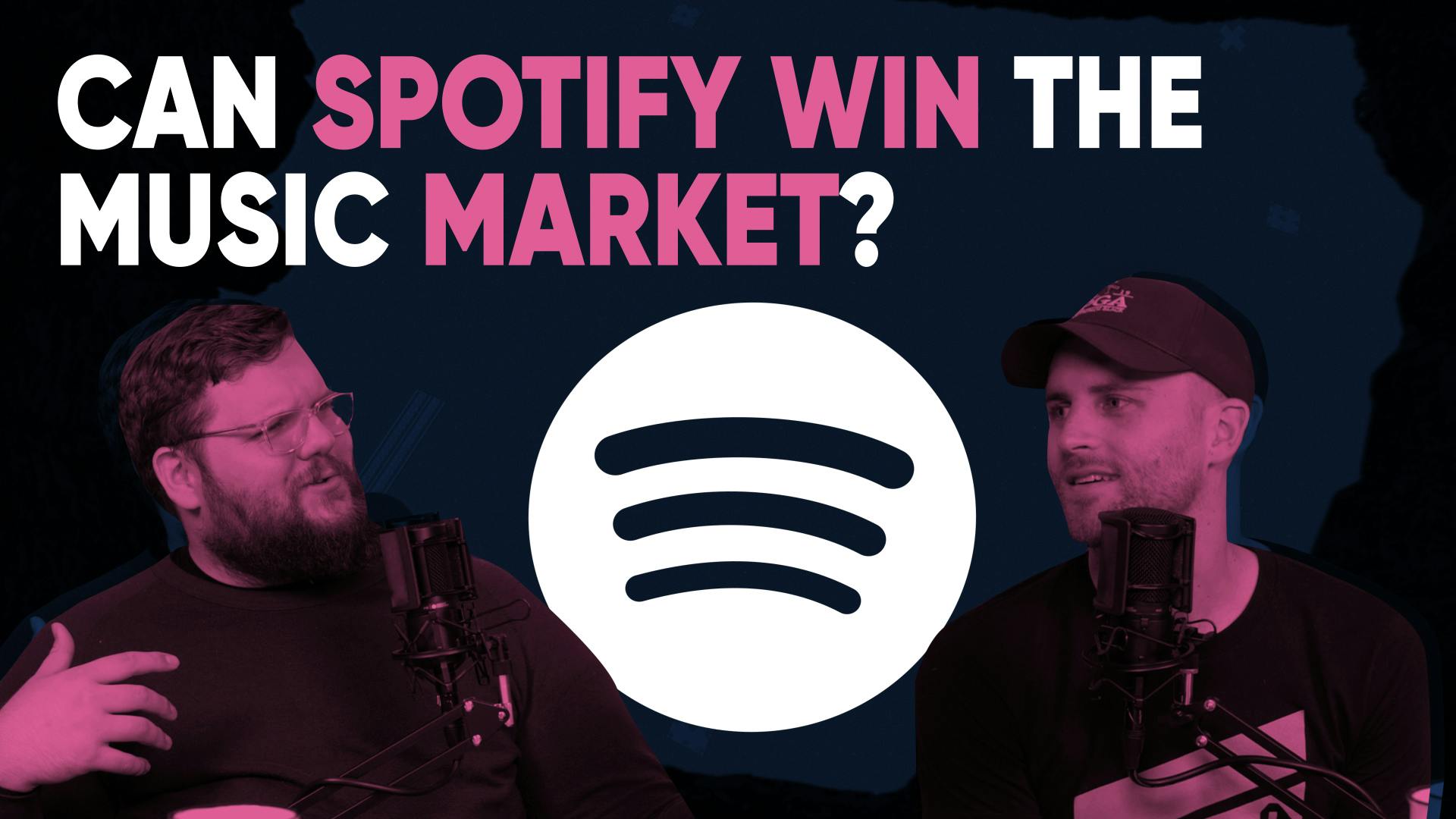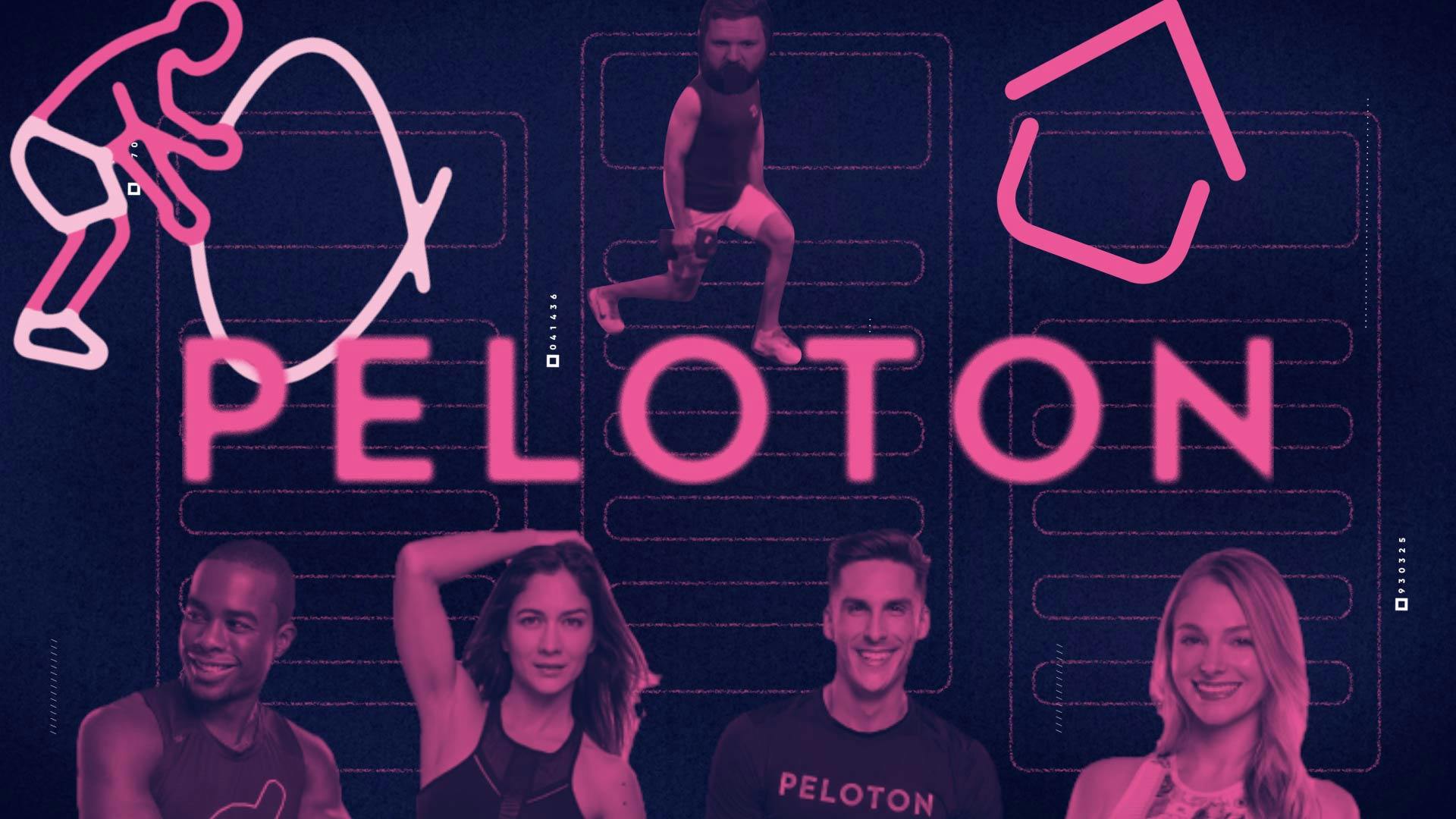
Is Zoom becoming too general?
This episode might reference ProfitWell and ProfitWell Recur, which following the acquisition by Paddle is now Paddle Studios. Some information may be out of date.
Please message us at studios@paddle.com if you have any questions or comments!
Zoom
What would a video conferencing product need to make you feel like distance isn’t coming between you and a loved one or colleague?
This is the central question that Zoom’s founder and CEO Eric Yuan daydreamed about during a much hated, 10-hour train ride he would take from where he attended university to go see his girlfriend, now wife. He would get so exhausted that he’d fall asleep standing—yea, did we mention he needed to stand the whole time?
To make matters even worse, Yuan was only able to see his girlfriend twice per year, so it’s pretty understandable that he’d imagine a device where he could simply push a button and be able to see and talk to her, instantly.
Little did he know that these daydreams would lead to a multi-billion dollar company that not only took the world of business by storm, but also entered public consciousness and has even become a verb we use on a daily basis.
Zoom's pricing page
The freemium model
Freemium done right means providing value with the right triggers. Zoom's freemium model was successful because they gave potential users full access to the product, but limited meeting length to 40 minutes. Slack also uses a similar strategy by limiting the ability to search back 10,000 messages. These limitations are not a big deal until you reach a certain number of users, and then the cost to upgrade becomes significant. Zoom's upgrade pricing is based on the number of users and forces businesses to buy a minimum of 10 seats for access to real business features.
Push pricing done right
Zoom and Slack have different approaches to SaaS pricing. Slack uses pull pricing, where users upgrade when they naturally want to and are fine paying more. In contrast, Salesforce uses push pricing, where users are forced to upgrade to access certain features. Push pricing can result in users paying for features they don't use, while pull pricing aligns pricing with user needs. However, push pricing was effective in the past when there were fewer features available. Nowadays, more companies are adopting pull pricing. Zoom's pricing structure requires a minimum of 10 users for certain features, but this aligns with the willingness to pay for those features. This approach avoids users paying for unnecessary features, as can happen with push pricing.
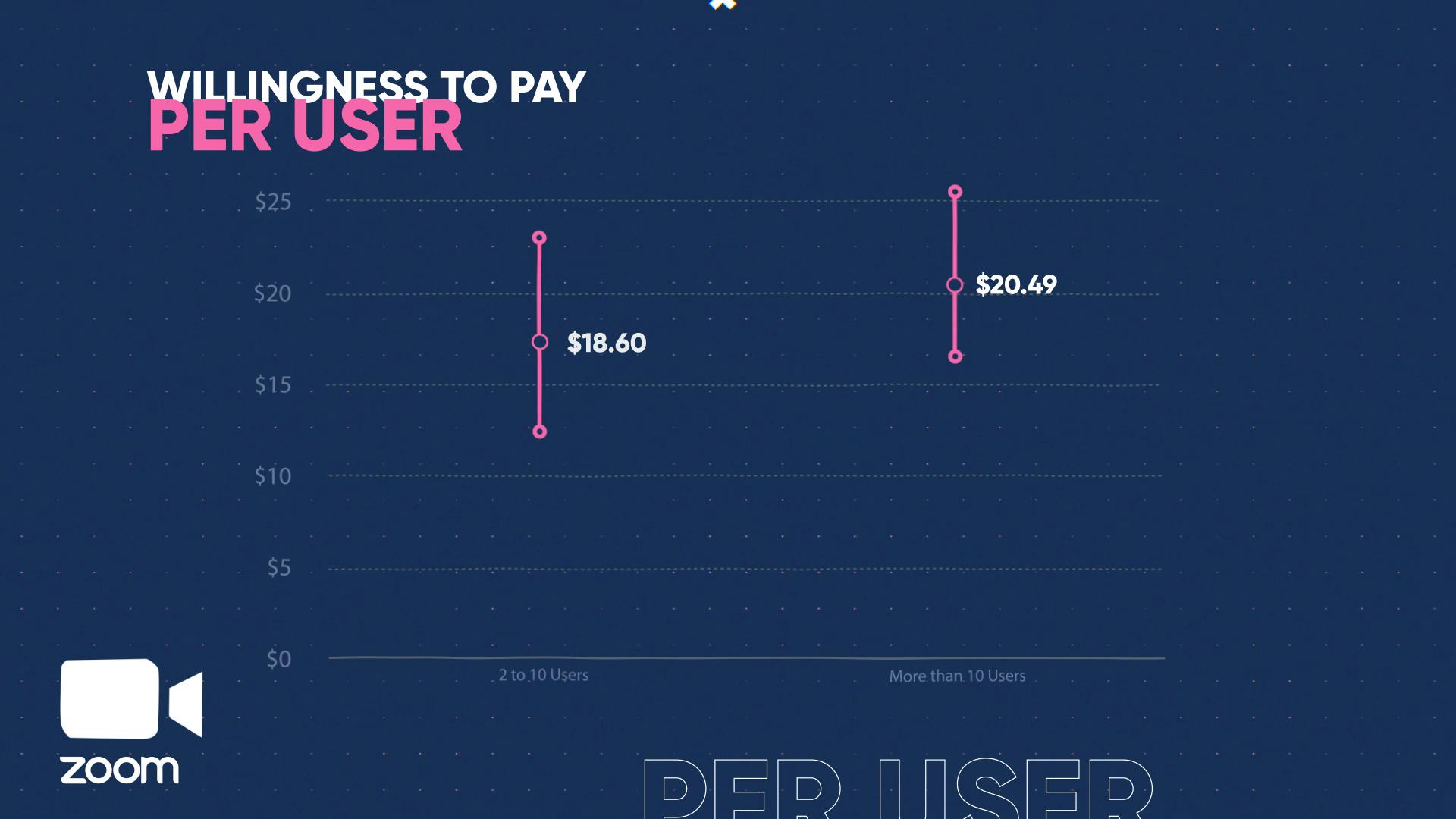
Looking at the relative preference graph below, we can see that users who need two to 10 users prefer meetings over 40 minutes. However, for those who need more than 100 users, there is a lot of dissonance as they need more than 40 minutes. The other features hover around an indifference point. This dissonance occurs for two reasons. Firstly, the group of more than 100 users wants every feature, typical on the enterprise side. Secondly, the group of two to 10 users can't decide on which other feature they really want.
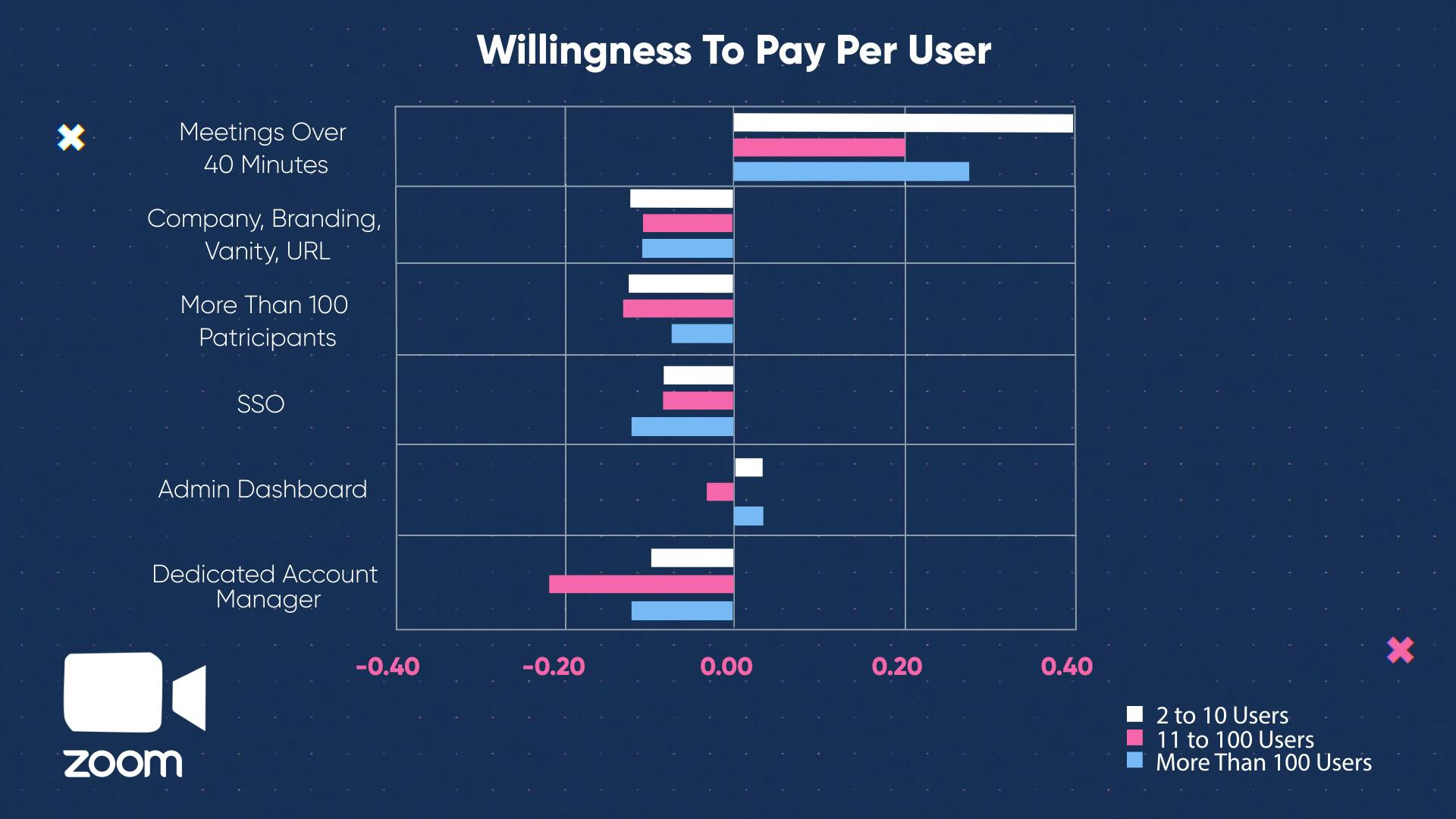
As customers upgrade, they are willing to pay more for the features they want. To ensure success, identify which features are important to each customer segment and offer them as differentiated tiers, rather than add-ons. As we see in the graph above, Zoom really knows that meeting length is crucial to their customers and that they are willing to pay more for it. If you create tiers with features that don't justify an upgrade, you risk losing customers. Don't stick to old-school thinking when monetizing software.
Annual Plans
To increase lifetime value (LTV) and lower churn, it's important to emphasize annual plans. Zoom's strategy involves promoting their annual upgrade to potential buyers. When you go to purchase, the annual plan is the most prominent option, offering a $400 discount compared to the monthly plan. This intentional pricing strategy emphasizes the dollar savings rather than the percentage discount, which tends to have a bigger impact on customers.
We studied how people choose annual plans based on different types of offers. Offering a percentage discount, such as 18% or 20%, is effective. On average, 11% of people selected the annual plan with this type of offer. However, offering two months or a specific dollar amount off increases signups to nearly 50%. It's important to not only encourage annual plan signups at initial signup, but also offer additional upgrade incentives during the first two to ten months of their subscription.
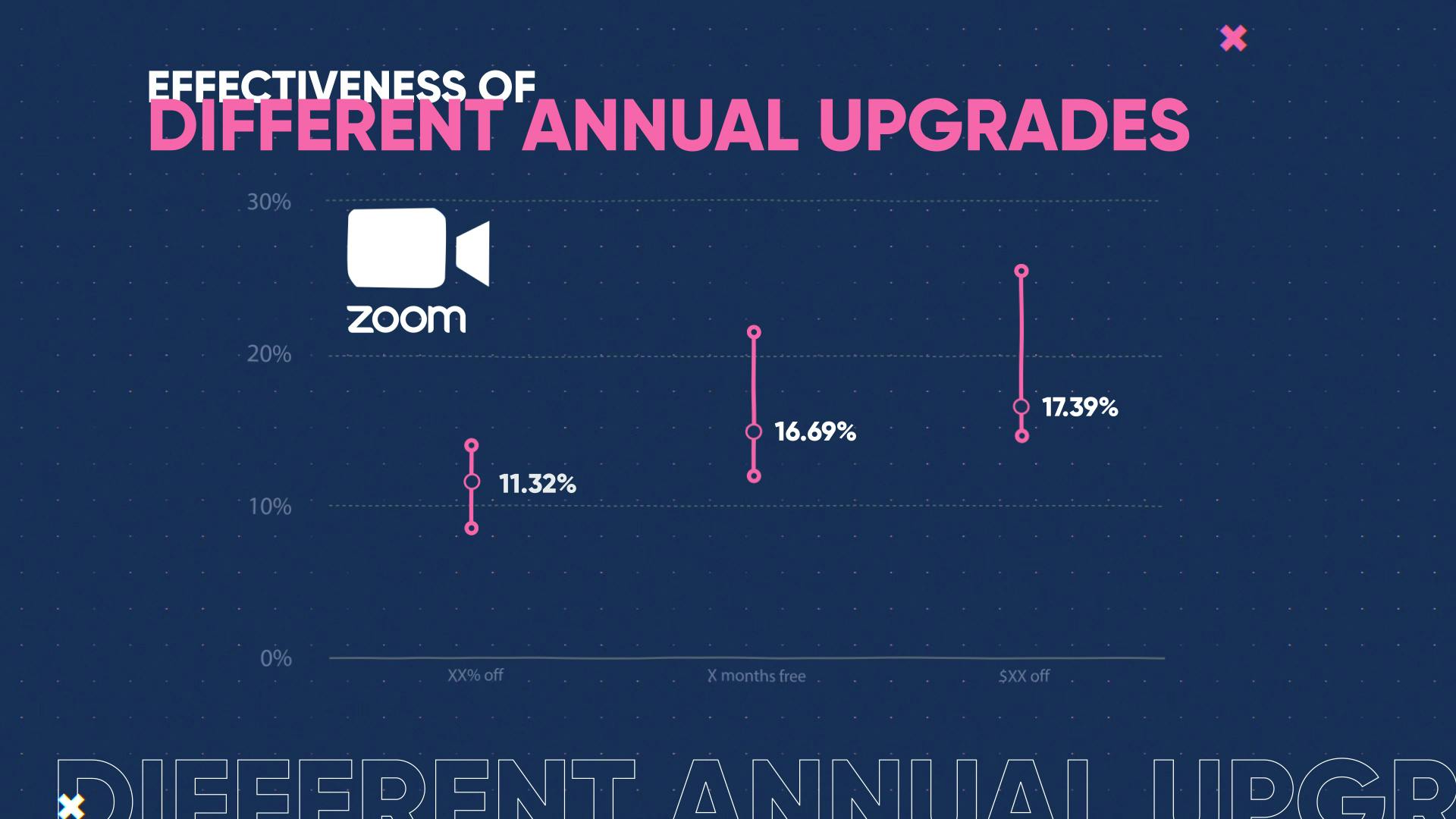
Sometimes when you're just starting the relationship, people aren't ready to go into an annual commitment. We consistently found those on annual plans typically churn at about a 30% lower the rate of those on monthly plans. So you want to make sure you're optimizing these annuals, both for lifetime value, as well as for lower churn. And this is something that Zoom does really, really well.
Add-ons
Add-ons can make or break B2B SaaS growth. For instance, Zoom offers various add-ons such as Zoom phone, Zoom rooms, and the H323 room connector (which costs an additional $50 per month per port).
Here is a value matrix we created by collecting data from a group and comparing feature preferences. We plotted the preferences on the horizontal axis, with more valued features on the right and less valued features on the left. We also collected willingness to pay for the overall product and plotted that based on the users' number one feature preference on the Y axis. Analyzing data in this manner helps us determine which features are differentiated add-ons, core, or commoditized for each segment.
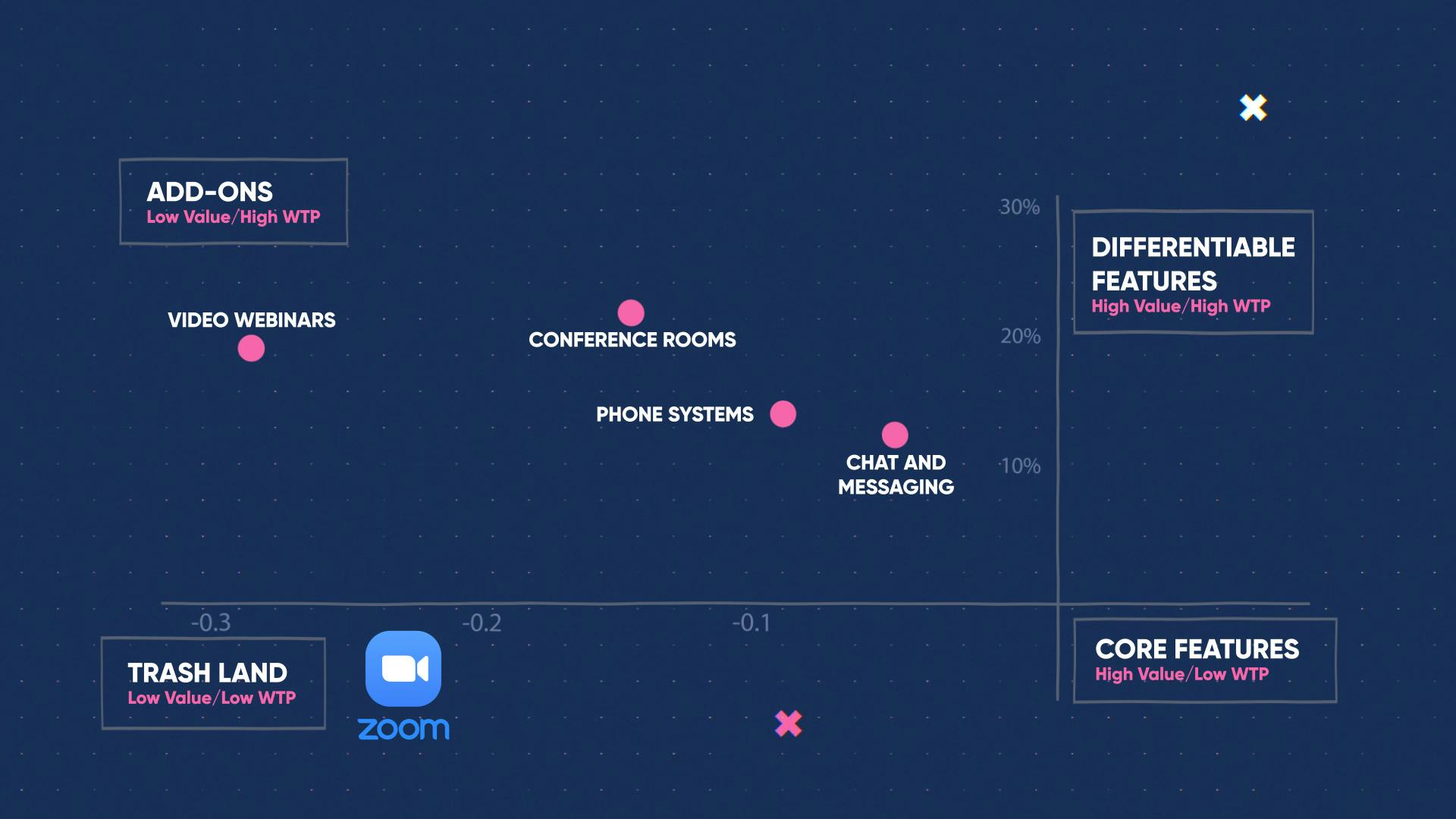
To differentiate your features, consider bundling them within the product or making them add-ons. Remove features that are used by less than 40% of users within a tier. Sell your product to everyone. Zoom has broken off certain features as add-ons because they're not necessary for everyone. Businesses often bundle too many features when they should be selling them as add-ons within their product. Understand where the actual value in your features lies.
Zoom's success is a result of many factors that work together to create a great product. They've used pricing strategies effectively to drive customer satisfaction and retention. While they have faced challenges, they've been able to address them and continue to grow. By focusing on the customer experience and differentiating their product, they've been able to maintain their position as a market leader.
Looking ahead, Zoom will need to continue to innovate and stay ahead of the competition. They will need to address potential privacy and security issues and continue to improve their product to meet the evolving needs of their customers. As video conferencing becomes more commoditized, they will need to find new ways to differentiate themselves and provide value to their customers. By staying focused on their core values and continuing to put their customers first, Zoom can continue to be successful in the years ahead.
Looking for help with your pricing?
Price Intelligently by Paddle is revolutionizing how SaaS and subscription companies price and package their products and services. Founded in 2012, we believe in value-based pricing rooted in first-party research to inform your monetization strategies. We combine expertise and data to solve your unique pricing challenges and catapult growth.
(00:00):
If Zoom doesn't figure this out, they are absolutely [inaudible] but I bet you Eric Yuan knows that.
(00:07):
Welcome to Pricing Page Teardown, where the ProfitWell Crew breaks down strategies and insights on how subscription companies from all corners of the market can win with monetization.
(00:23):
Welcome to pricing page Teardown. I'm Patrick Campbell. And I'm Rob Litterst. And this week we are talking about the enterprise B2B behemoth Zoom. I
(00:31):
Am on so many zooms these days. I don't even, I can't even tell when
(00:34):
I'm not on Zoom. Well your weekends are just weekdays without Zoom or with less zoom. Yeah, with less Zoom. Do you do some Zoom on the weekends too? Yeah, yeah. Anyway, zoom is one of the darlings of the SaaS industry and I think the beauty of Zoom is both in its simplicity, but how quickly that you're able to basically connect to a meeting. And what we're gonna do today is we're gonna walk through what Zoom is doing really, really well when it comes to their pricing as well as what they're doing not so well when it comes to their pricing. And wrap up all of those learnings and all that data into a nice little case study to help you and your own monetization strategy.
(01:12):
What would a video conferencing product need to make you feel like distance and even a computer screen aren't coming between you and a loved one or colleague? This is the central question that Zoom's founder and CEO Eric Yuan daydreamed about during a much hated 10 hour train ride he would take from where he attended university to go see his girlfriend now wife, he would get so exhausted that he'd fall asleep standing. Yeah. Did we mention he needed to stand the entire time to make matters even worse? Yon was only able to see his girlfriend twice per year. So it's pretty understandable that he'd imagine a device where he could simply push a button and be able to see and talk to her instantly. Little did he know that these daydreams would lead to a multi-billion dollar company that not only took the world of business by storm, but also entered public consciousness and has even become a verb we use on a daily basis.
(02:04):
Zoom strength stems from Yuan's vision, which was to create a product that would work equally well in a boardroom, a classroom, or even a kitchen anywhere in the world. And even though the video and conferencing market is one of the most crowded in the world, zoom didn't revolutionize any one thing to win the market. Instead Zoom took all of the issues that other products had big and small and just fixed them with an insatiable focus and experience. Throw in a freemium pricing model where anyone can connect to a 40 minute meeting for free and you have a recipe for a once in a generation product that's worth more than IBM VMware and the world's seven largest airlines combined. That's a lot of meetings. This growth hasn't come without criticism, though Zoom did not anticipate certain use cases. And so privacy and security issues have become a thorn in Zoom site with Barbs being thrown from security experts, lawmakers and even the fbi.
(02:56):
Zoom has addressed all of these incidents and spun up a world-class team to fix these and future flaws. But some believe this is a wedge to take on Zoom's growth, especially from a security enterprise conscious foe like Microsoft and their Microsoft team's product. Other critics note that many competitive products both begin small can simply draft off Zoom's innovation and add more functionality to take on Zoom or at least make a cheaper equivalent zoom. The question then becomes does Zoom have enough product chops to justify and hold onto their growth, especially in a market that's only going to become more competitive? Does the calculus change when you realize video conferencing is becoming more commoditized and willingness to pay is dropping like a bad internet connection? It seems this market is zooms to lose. So we're gonna answer these questions by collecting data from current and prospective Zoom customers and we're gonna reveal all the data and answer to these questions coming up.
(03:52):
There's some days where I'm zooming, I'm pretty sure for like 15 times. Yeah.
(03:56):
That I've seen your calendar. Yeah. It's actually gives me like chills. It's
(04:00):
It's, it's uncomfortable. The beauty of what Zoom did is they basically took all of the annoying pieces, like the two dozen different annoying pieces of all of the other products and they just fixed them. It reminds me a lot of what Dropbox did because there were a ton of file sync and share products before Dropbox. They were like, cool, but we're gonna like make it good and make it easy. And all of a sudden they were the ones who ended up dominated the market. Totally. And when you think about Zoom, it's like the HD video. Um, they weren't the first to do that, but they were the first to kind of have it on by default and make it easy. Yeah. And make it seamless. Um, touch to kind of connect. I think that's a big thing that a lot of companies can take away from this, which is sometimes you don't have to be 10 x better and I think that a lot of people think, oh, if I can't make a five to 10 X better product, it's just not gonna work out. And I think what Zoom realized is that hey, in some markets there isn't a 10 x better product and therefore why don't we just incrementally improve all of the things that make these other products not so great. Totally. And with a nice little freemium model, which we'll talk about in a second, can just go ahead and and beat the market.
(05:00):
Exactly. But have they gotten too good at what they're doing?
(05:04):
That's an interesting question, right? Yeah. Like why do you, why do you think that would be a problem? Yeah.
(05:07):
We're starting to see this big kind of like zoom on bundling where there are like 200 different video conferences and companies that are specific to each particular use case. I wonder if Zoom kind of niches down.
(05:16):
I think you bring up an interesting point cuz you see this within certain markets where they'll basically, they'll all in one, then they'll commoditize, then they'll all in one, then they'll commoditize. And I think the, the, the folks who win the all in one are typically the ones where it's such a utility and so commoditized and they price based on that where either the niches will then connect the data or connect the certain aspects of the product into the rest of the workflow of the segment. What Zoom needs to be careful of and where they might run into some problems is that Zoom could actually find that they're too general. Mm-hmm <affirmative> where all of a sudden there is a zoom specific for salespeople, right? There is a zoom specific for webinars, which we've seen, you know, with mixed success. But now just video calling is finally just ubiquitous throughout the culture. And you can argue that it was ubiquitous before it, but it really wasn't. Let's
(06:04):
Take a look at their pricing page and some of the data that we collected from current and prospective customers.
(06:08):
Yeah, we're gonna study this data as well as the outcomes from that data in order to kind of wrap up all of these good things and bad things that Zoom is doing so that you can take these as a lesson and a case study and how you can improve your own monetization strategy.
(06:21):
So where does our data come from? Here at ProfitWell, our price intelligently product combines proprietary algorithms and methodologies with a team of pricing experts who think about this stuff more than anyone else to help companies optimize their monetization strategy. We do this by going out into the market and collecting data from current and prospective customers. Having the ability to collect data from everyone from a soccer mom or dad in the middle of Kansas all the way to a Fortune 500 CIO in South Africa. We then take that data and run it through our algorithms and analyze it in every direction to determine a company's ideal customer profiles as well as which segments value which features and which segments are willing to pay more. All in the spirit of determining how a company can use monetization for growth.
(07:10):
First up freemium done right means providing value with the right triggers. And what I mean by that is when Zoom entered the market and when they really started to grow heavily, there were a lot of free trials on the market. There were a few freemium offerings on the market but none of them really gave potential users like full access to the product. Yeah. Their big throttle was actually meeting length, right? Yeah. So you couldn't go for more than 40 minutes. They're eventually gonna have to upgrade cuz everybody needs more than 40 minutes eventually. Yeah.
(07:37):
You need to think about freemium as like a premium ebook, um, where you're kind of opening up the top of the funnel, getting a lot of users in and then if you give a full featured free, um, which is what Zoom essentially did mm-hmm. <affirmative>, um, and you're limiting some sort of like throttle that really isn't that annoying until you're willing to pay. That's like the perfect freemium model, right? So for example, like Slack does this, the 10,000, you know, data, um, limit in terms of you can search back 10,000 messages. That's not really annoying until you're about 20 people, right? Probably 15. You're not just paying them, you know, five bucks a month, you end up paying them 150 to 200 bucks a month like right out of the gate. And I think Zoom does this really, really beautifully. Not only for the a hundred participants, unlimited one to one meetings, all of these different things. Mm-hmm <affirmative>, but also when you upgrade all of a sudden it's based on the number of users that you have and they pretty much kind of force you into where yes you can pay one off for like $15 a month type users, but then when you get into like real business features that you might be looking for, you have to buy a minimum of 10 seats. Right?
(08:41):
Next up Zoom shows us push pricing done, right? And as you and I have talked about a lot, there's this kind of theory when it comes to SaaS pricing in particular where you can have push versus pull pricing, right? So Slack is a really example that we already just referenced of pull pricing. If they're not forcing you to upgrade, it's when you naturally want to upgrade, right? And you totally find paying, um, that you upgrade. A really kind of different example of push pricing. One that I don't think is that great is actually Salesforce. They do push pricing where it's, hey, you might get the API in the lower tier but you don't get any calls on the API until you're on the next tier, right? So you have to upgrade. But it's one of those things where they, they're able to do this because they're the behemoth in the market.
(09:23):
But the problem with push pricing is that oftentimes you end up having users on that particular product that aren't using 50% of the features that you're offering them cuz there's just so many nickel and dime features and they kind of choose where to put them. Push pricing was really, really good basically in two thousands, 2010s cuz there's just weren't as many features now there's just tons and tons of features out there, right? And so you're seeing the rise of more pull pricing. What you'll notice is that even just on the structure of their pricing page, when you go to wanting some of these other features, you automatically have to get a minimum of 10 users. Now normally we would say, oh my gosh, that's terrible. Like why are you forcing that? Right? But what you'll notice in the actual data here is that the willingness to pay for folks is actually right on target when it comes to those particular features.
(10:10):
As soon as they push you up into that tier that you're forced into, you want sso, right? You want custom branding and so it doesn't feel like you're paying for things that you're not really using, right? Like in a Salesforce situation, you end up just paying for things that you naturally were gonna want. Anyways. To illustrate this point further, when we look at this actual relative preference graph where we're actually comparing and contrasting what the relative preference for different features are based on the number of users need it. Those folks who need two to 10 users, their highest preferred feature is the meetings over 40 minutes. Whereas when you get to the folks who need more than a hundred users, there's a bunch of dissonance here where they obviously do need the more than over 40 minutes. But then all of the other features are basically hovering around that indifference points, right?
(10:53):
You can kind of see that same dissonance when you look at the two to 10 users. The dissonance is occurring for two different reasons. One, the more than a hundred users this dissonance occurs because they actually want everything. They basically want every single feature. And that's what happens with the enterprise side, right? Whereas the two to 10 users, it's because they can't decide on which other feature they really, really want. The long and short of it is, is that as those customers start to upgrade, they're more than willing to pay more and they're more than willing to pay for those particular features because those are the features that they're actually looking for, right? And the big takeaway for you and your business is that you should be thinking through the segments of your customers and how they grow with the differentiated features that you have, not only from an add-on perspective that we'll talk about in a second, but also from a tiering perspective. Because if you have tier where there's a lot of dissonance in where those features are, meaning I don't really wanna upgrade for that feature, I don't wanna be forced to upgrade for that feature, you run the risk of running into a situation where your users basically just aren't buying it and all of a sudden you're gonna create this like pain when people wanna upgrade, where they're not gonna love to pay you more for their product, which is just a very, very old school way of thinking when it comes to monetizing software.
(12:00):
Next up, hammering home annuals is crucial to hire LTV and lower churn a hundred percent. If you look at their workflow, just check out how they inundate potential buyers with this. A upgrade to annual, right? Yeah.
(12:11):
As soon as you hit buy now it is the most highlighted center screen tier where they're basically saying, Hey, you can sign up for monthly and you can totally do this for 200 bucks a month, or you can save $400, right? And basically, you know, get the annual plan.
(12:28):
That's not, and that's totally intentional too. The $400, a hundred percent as we've seen like the way that humans think, they don't necessarily register percentages dollars typically have a bigger impact and really move the needle. Yeah. And
(12:38):
To give some data support of this, we looked at how often people would select an annual plan based on the type of offer that they were given. And what we basically found is that when you're using X percentage off, so 18% off, 20% off, whatever it ends up being, it does work. It's effective. Right now in this data set, it's basically a median of about 11% of people will sign up for the annual plan at signup. But when you change that to two months free or X number of months free or a specific dollar amount off, all of a sudden that jumps almost 50% depending on how you're looking at it in terms of effectiveness, in terms of signup. And in reality, what people should be doing is not only helping people upgrade to annual at signup, but then making sure in those first two to 10 months that those customers are getting other offers to upgrade to annual. Because sometimes when you know you're just starting the relationship as you will, people aren't ready to go into an annual commitment as we've consistently found those folks who are on annual plans, they typically turn at about 30% lower the rate than the monthly plans. So you wanna make sure you're optimizing these annuals both for lifetime value as well as for lower churn. And this is something that Zoom does really, really well.
(13:46):
Last point, add-ons will make or break B2B SaaS growth.
(13:49):
A hundred percent. Did you know that Zoom has a Slack competitor?
(13:53):
Yes, I did hear isn't that wild, but I've never used it.
(13:55):
There's a bunch of different add-ons, zoom phone, uh, zoom rooms, um, the H 3 23 room connector, which I have no idea what that is.
(14:02):
<laugh>. Yeah, me
(14:03):
Neither. But it sounds fascinating. It's another $50 per month per port.
(14:07):
You're about to see something called a value matrix here. We collected data from the group comparing feature preferences, plotted those on the horizontal axis, more valued features on the right, less valued on the left. We then collected willingness to pay for the overall product and plotted that based on their number one feature preference on the Y axis. Analyzing data in this manner allows us to determine which features are differential add-ons, core or commoditized. For each segment,
(14:37):
You need to really think about how you differentiate your features, either into bundling them within the product or making them an add-on. If they're not used by, you know, let's say more than 40% of the users within a tier, you should be taking that feature out and then ultimately making sure that you're selling it to everyone. And to give you some data here, just in terms of, you know, how things are looking, when you look at some of the pieces that Zoom has actually broken off in terms of add-ons, is that those particular features, they're not necessarily needed by everyone. No. Right? Yeah. Like if you're not into video webinars, you're not gonna have video webinars, software, right? But the people who do want that product, they're more than willing to pay for it. And I think it's a really, really strong illustration of just how powerful and how important, making sure that you're understanding where the actual value in your features are. Because too many times businesses are bundling so many different features that they should be taking out and selling as add-ons within their products.
(15:34):
Let's
(15:34):
Recap. Let's do it. So first up, freemium done right means providing value with the right triggers. And what we mean by that is freemium. Again, it's an acquisition model, not a revenue model within your business. I am a big proponent that every company in the world is gonna have freemium in the next 10 years. And so you need some way to get people into your funnel while lowering the activation energy to give, you know, an email or to create an actual account. But you gotta make sure that you're giving enough within that freemium tier that people want it. Gosh,
(16:04):
Totally. It's that balance between providing value without cannibalizing revenue from your paid plan.
(16:08):
Next up, push pricing done right? Can work wonders. And what we saw with Zoom is that push pricing isn't necessarily something that most companies should do, but Zoom hit it almost perfectly when it comes to their actual features. Where those features that they push you up into are the ones that you're naturally gonna want anyways. And so it's a perfect kind of world of like getting the benefits of poll pricing. Mm-hmm. <affirmative> meaning the user just naturally upgrades, but doing it in more of a pushy manner, which Zoom obviously is taken advantage of to get a ton of enterprise value. And
(16:40):
Last up, add-ons will make or break B2B SaaS businesses. Zoom absolutely nails this. They have all these different add-ons. They do a great job of making those things available to everybody.
(16:51):
That's it for this week's episode. A pricing page. Teardown, if you got value from this, if you learn something, if you just enjoyed it, got a chuckle, make sure you share this on the social media channel of your choice. We want to get this knowledge into the hands of as many people as humanly possible. And if you wanna get this data for your own company or Zoom, if you want some extra help getting even better at your pricing, feel free to reach out to me@patrickatprovo.com or Rob here@robatprovo.com and we'll make sure you get to the right team to get this type of data, get this type of insight for your own company.
(17:19):
What do we have going on next week? Next
(17:21):
Week? Mm-hmm. <affirmative>. We're going from the world of B2B to the world of B to B to C, as they say, which is super confusing, but that's kind of how it works. And we're gonna be talking about the big e-commerce juggernaut, Shopify, who has basically taken over the world. Yeah, but they're doing some things wrong and I think it's really, really dangerous for them in the context of Amazon. And so I'm excited to dig into that data and ultimately help them not get overtaken by Amazon, which you know, is an interesting thing to think about. They're making a lot of moves. Making a lot of moves. All right, we'll see you next week.
